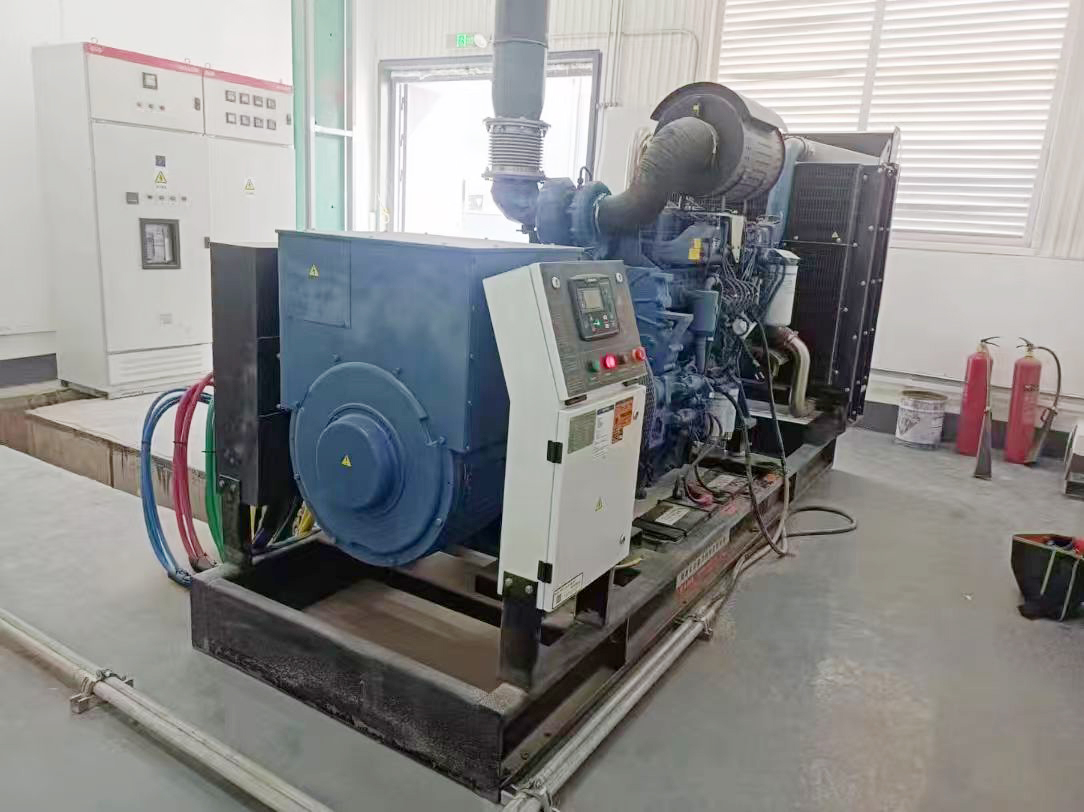Diesel generator sets, as common backup power sources, involve fuel, high temperatures, and electrical equipment, posing fire risks. Below are key fire prevention precautions:
I. Installation and Environmental Requirements
- Location and Spacing
- Install in a well-ventilated, dedicated room away from flammable materials, with walls made of fire-resistant materials (e.g., concrete).
- Maintain a minimum clearance of ≥1 meter between the generator and walls or other equipment to ensure proper ventilation and maintenance access.
- Outdoor installations must be weatherproof (rain and moisture-resistant) and avoid direct sunlight on the fuel tank.
- Fire Protection Measures
- Equip the room with ABC dry powder fire extinguishers or CO₂ extinguishers (water-based extinguishers are prohibited).
- Large generator sets should have an automatic fire suppression system (e.g., FM-200).
- Install oil containment trenches to prevent fuel accumulation.
II. Fuel System Safety
- Fuel Storage and Supply
- Use fire-resistant fuel tanks (preferably metal), placed ≥2 meters from the generator or separated by a fireproof barrier.
- Regularly inspect fuel lines and connections for leaks; install an emergency shutoff valve in the fuel supply line.
- Refuel only when the generator is off, and avoid open flames or sparks (use anti-static tools).
- Exhaust and High-Temperature Components
- Insulate exhaust pipes and keep them away from combustibles; ensure the exhaust outlet does not face flammable areas.
- Keep the area around turbochargers and other hot components clear of debris.
III. Electrical Safety
- Wiring and Equipment
- Use flame-retardant cables and avoid overloading or short circuits; regularly check for insulation damage.
- Ensure electrical panels and circuit breakers are dust- and moisture-proof to prevent arcing.
- Static Electricity and Grounding
- All metal parts (generator frame, fuel tank, etc.) must be properly grounded with a resistance ≤10Ω.
- Operators should avoid wearing synthetic clothing to prevent static sparks.
IV. Operation and Maintenance
- Operating Procedures
- Before starting, check for fuel leaks and damaged wiring.
- No smoking or open flames near the generator; flammable materials (e.g., paint, solvents) must not be stored in the room.
- Monitor temperature during prolonged operation to prevent overheating.
- Regular Maintenance
- Clean oil residues and dust (especially from exhaust pipes and mufflers).
- Test fire extinguishers monthly and inspect fire suppression systems annually.
- Replace worn seals (e.g., fuel injectors, pipe fittings).
V. Emergency Response
- Fire Handling
- Immediately shut down the generator and cut off the fuel supply; use a fire extinguisher for small fires.
- For electrical fires, cut power first—never use water. For fuel fires, use foam or dry powder extinguishers.
- If the fire escalates, evacuate and call emergency services.
- Fuel Leaks
- Close the fuel valve, contain spills with absorbent materials (e.g., sand), and ventilate to disperse fumes.
VI. Additional Precautions
- Battery Safety: Battery rooms must be ventilated to prevent hydrogen buildup.
- Waste Disposal: Dispose of used oil and filters as hazardous waste—never dump improperly.
- Training: Operators must receive fire safety training and know emergency protocols.
By following proper installation, operation, and maintenance guidelines, fire risks can be significantly reduced. Post safety warnings and operating procedures visibly in the generator room.
Post time: Aug-11-2025

















